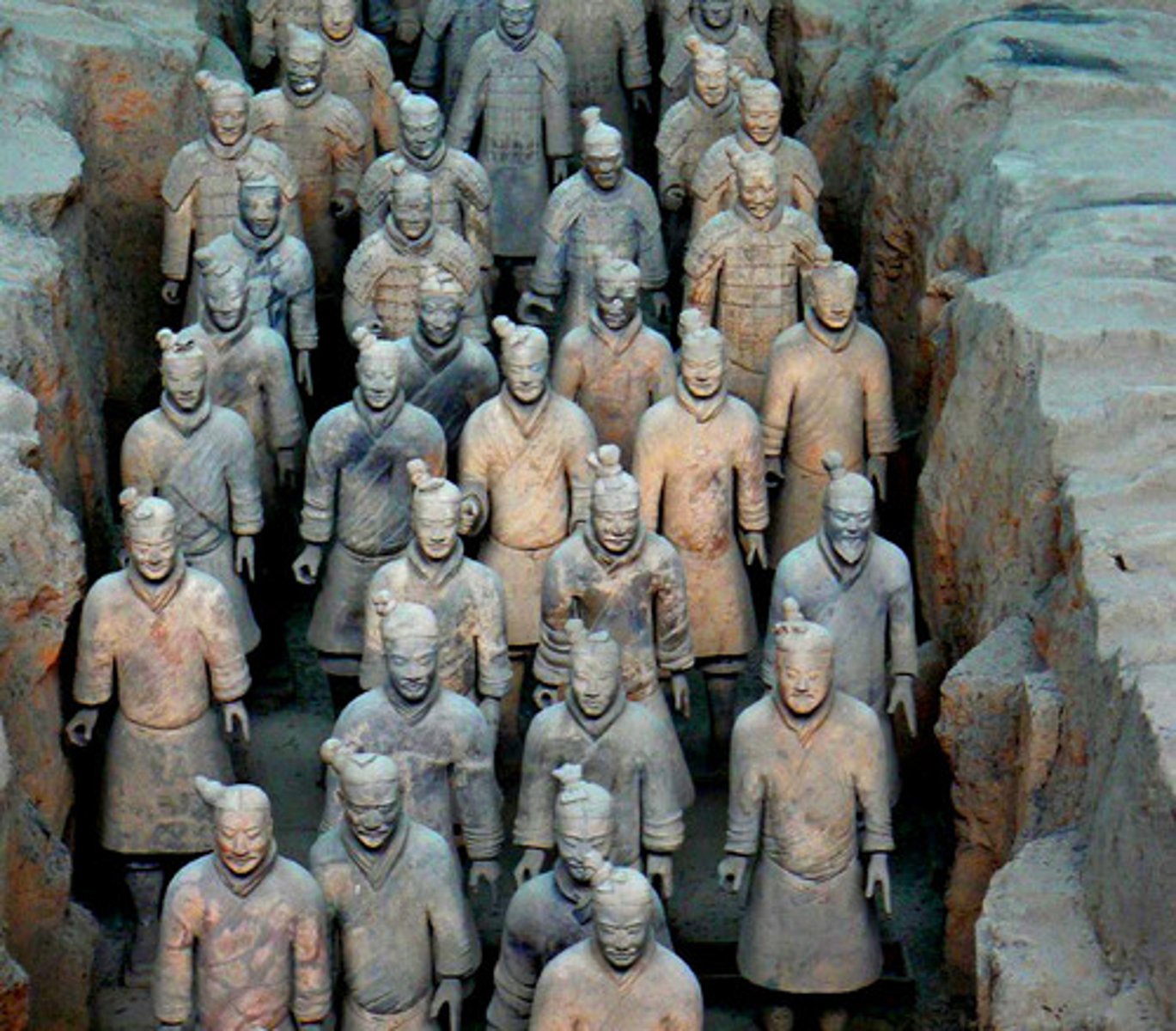Middle and New Kingdom Egypt
1/17
There's no tags or description
Looks like no tags are added yet.
Name | Mastery | Learn | Test | Matching | Spaced |
|---|
No study sessions yet.
18 Terms
upper Egypt
the southern part of ancient Egypt where the nile flows through the desert, bordering the sea
Middle Kingdom Period
2055-1650 BCE, characterized by a series of Pharaohs who built massive tombs and introduced funerary art (main idea-??)
New Kingdom Period
1550-1069 BCE, where the focus was on displaying imperial power through large funerary complexes and temples in the city (such as Thebes)
Amun
The main god of the New Kingdom, had a temple dedicated to him named Karnak
Karnak
Great temple of Amen at Thebes, the largest complex of religious buildings in the World (temple of Amun-Ra)

Luxor
temple complex in upper Egypt in Thebes where kings were buried or celebrated. lots of temples and ceremonial things. Located next to valley of the kings

Valley of Kings and Queens
Located in Thebes (Karnak) on the Nile River; between Lower Egypt and Upper Egypt, East of the Sahara, West of the Red Sea; the pyramids of the dead kings and queens were mostly all in this valley
Abu Simbel
Temple built by Ramses the Great that was carved out of sandstone cliffs and at its entrance, four 66-foot-tall statues show Ramses as pharaoh.
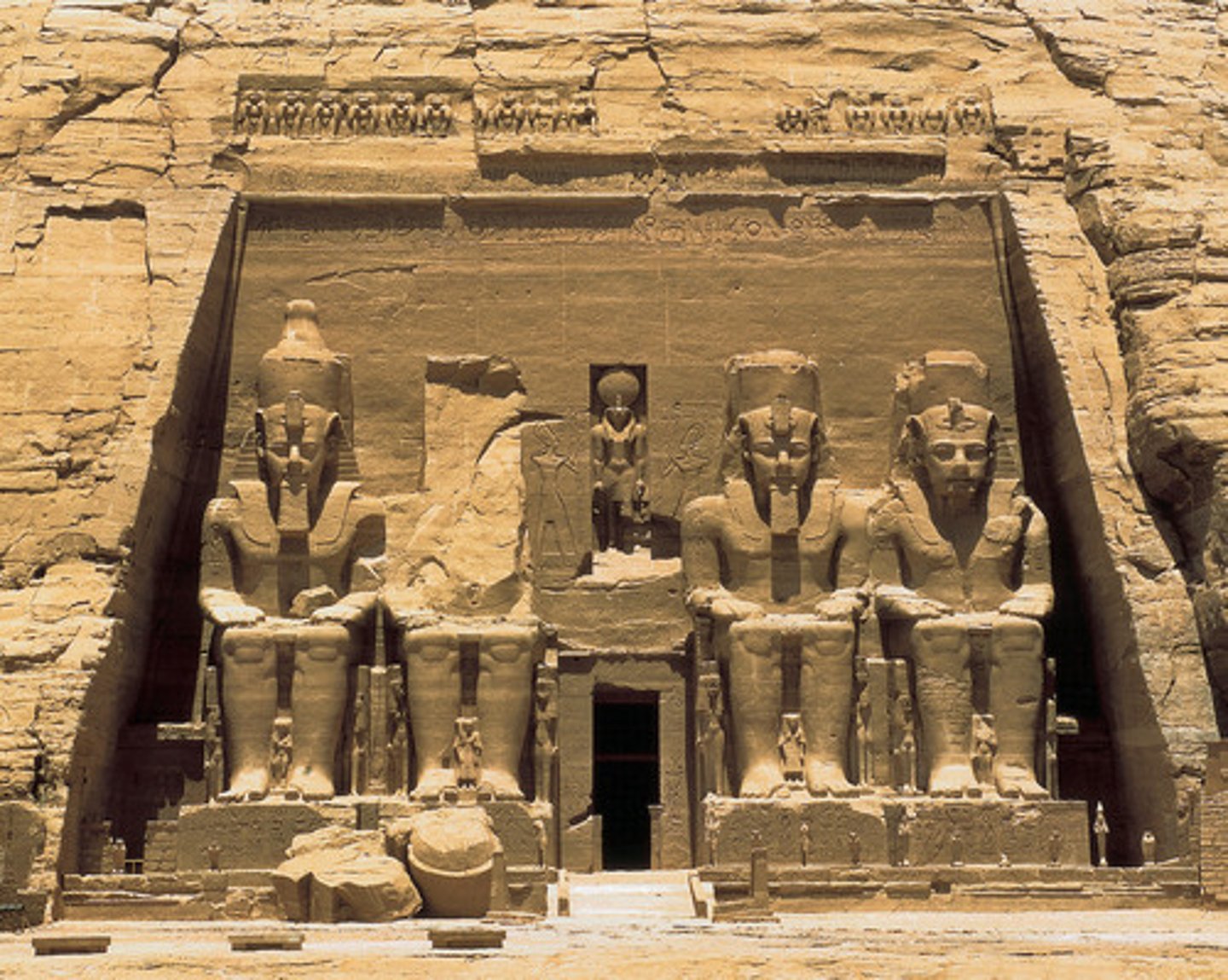
Hatshepsut
First female pharaoh
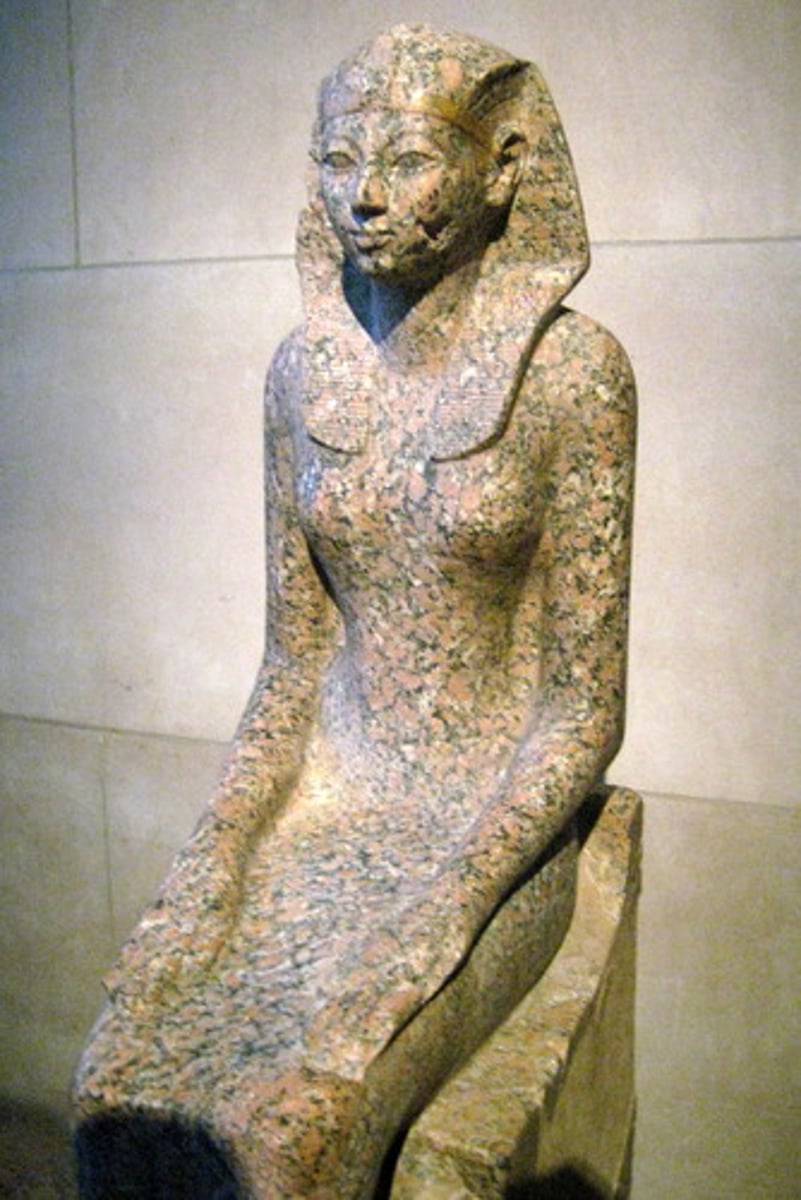
Ramesses II
A long-lived ruler of New Kingdom Egypt; had a massive temple called Abu Simbel built in his honor
Nefertari
wife of Ramses II
Nefertiti
queen of Egypt (14th century BCE)
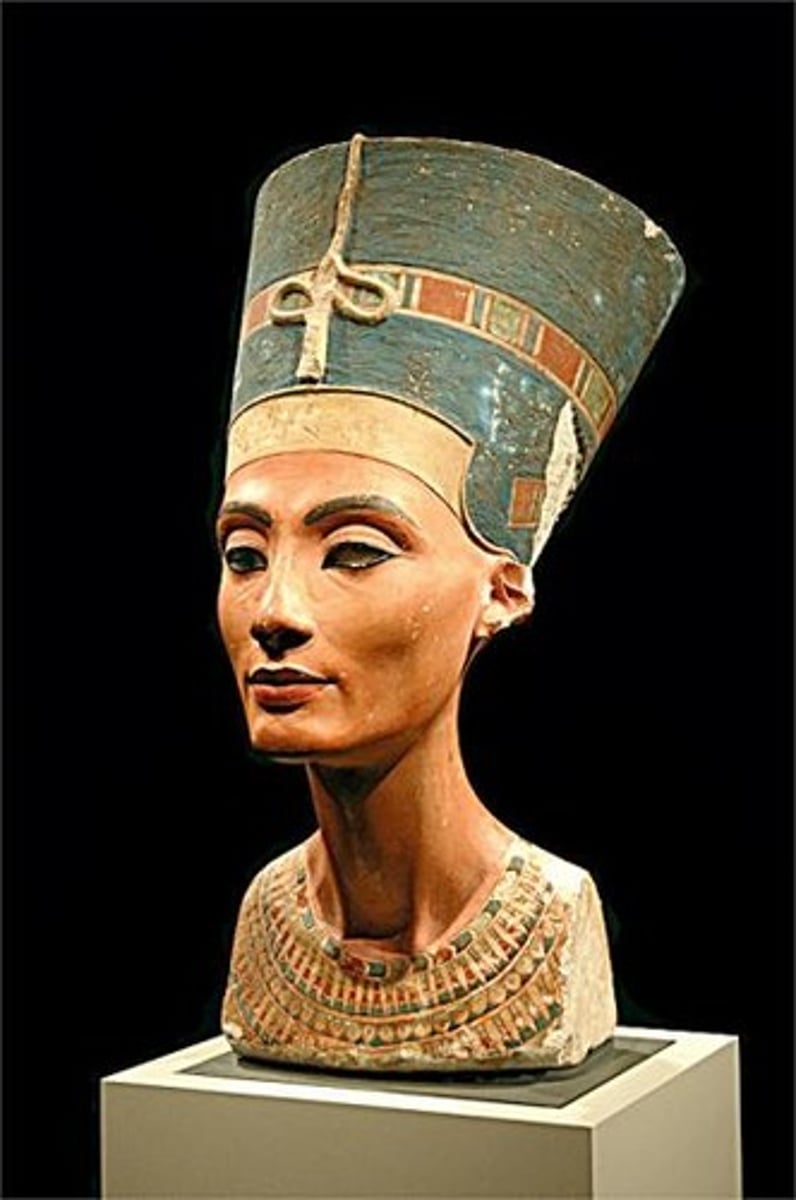
Qin Dynasty
the Chinese dynasty (from 246 BC to 206 BC) that established the first centralized imperial government and built much of the Great Wall
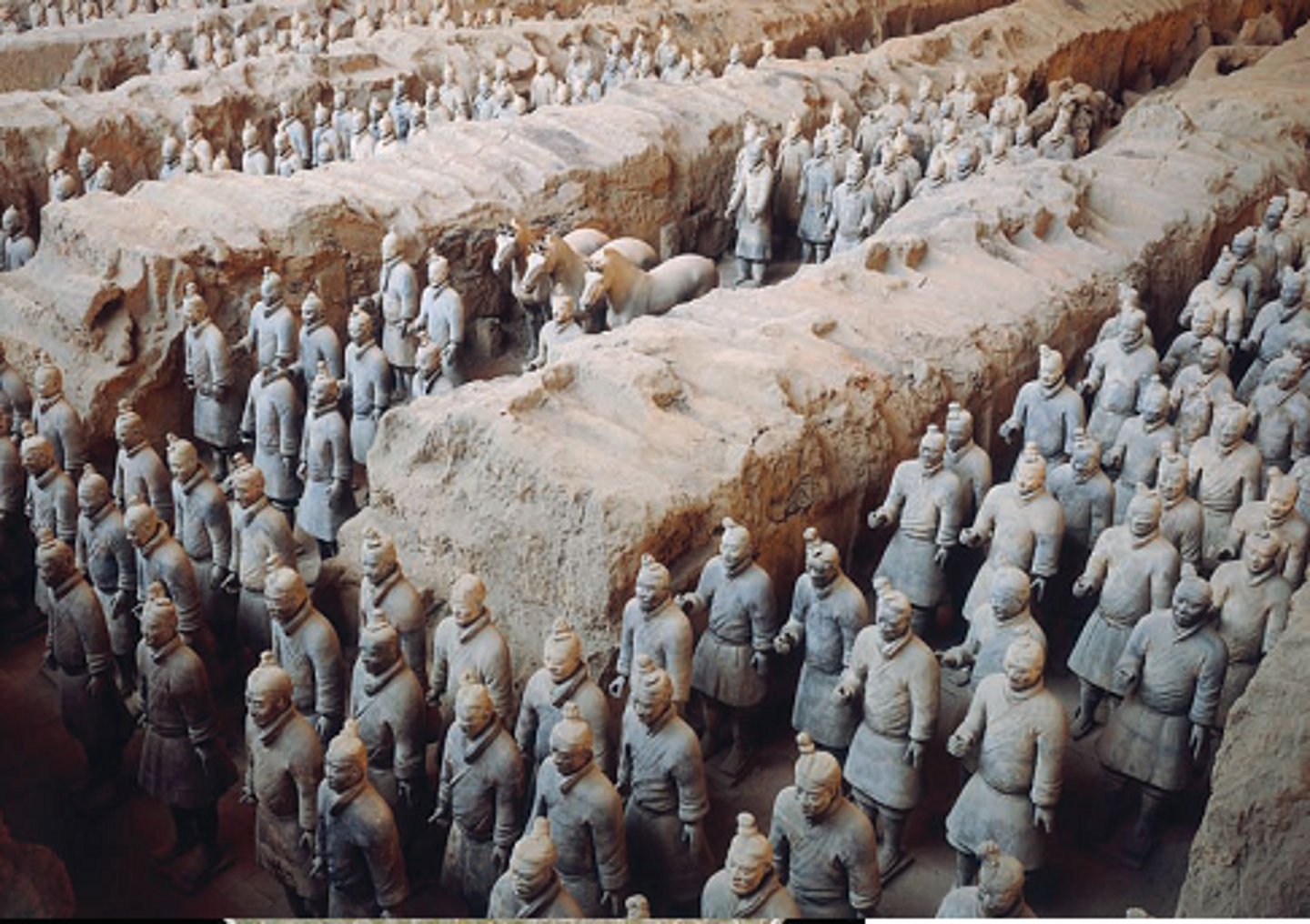
Shaanxi
an archeological site in the Shimao that provides evidence of the transition from Neolithic to Bronze Age settlements
hypostyle hall
a large interior room characterized by many closely spaced columns that support its roof
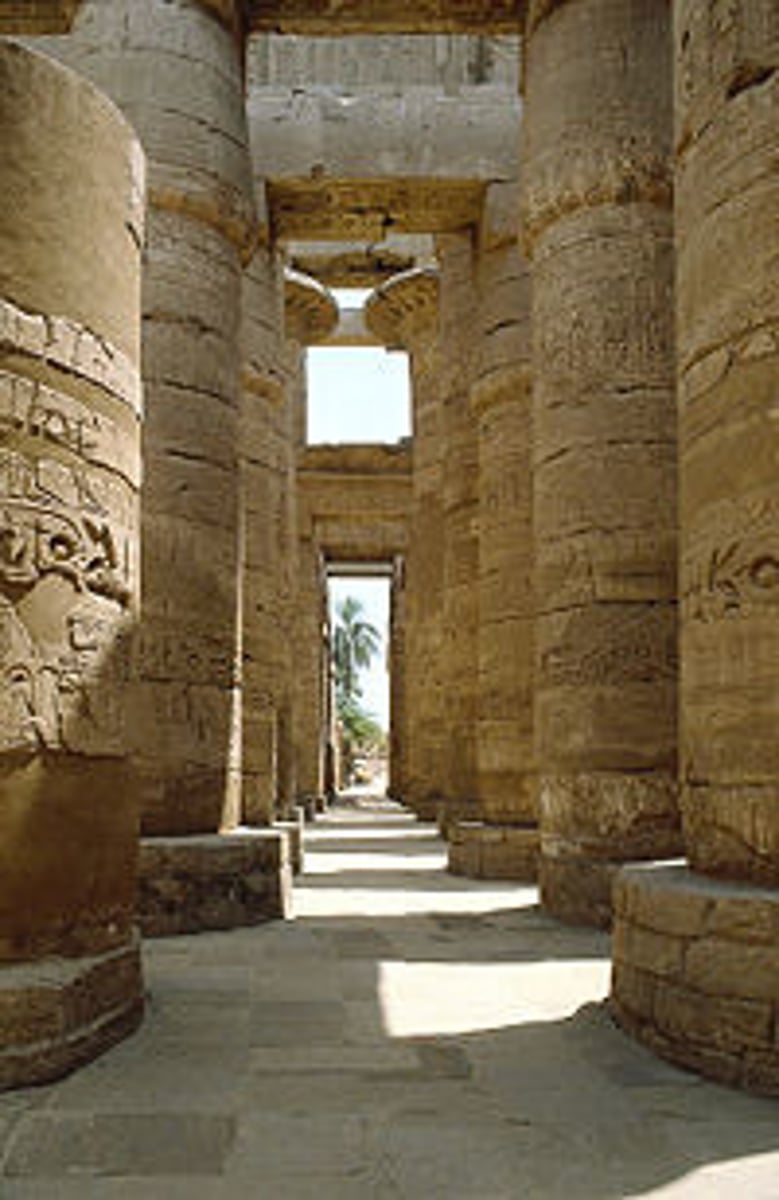
column
an upright, weight-bearing component
pylon
The wide entrance gateway of an Egyptian temple, characterized by its sloping walls
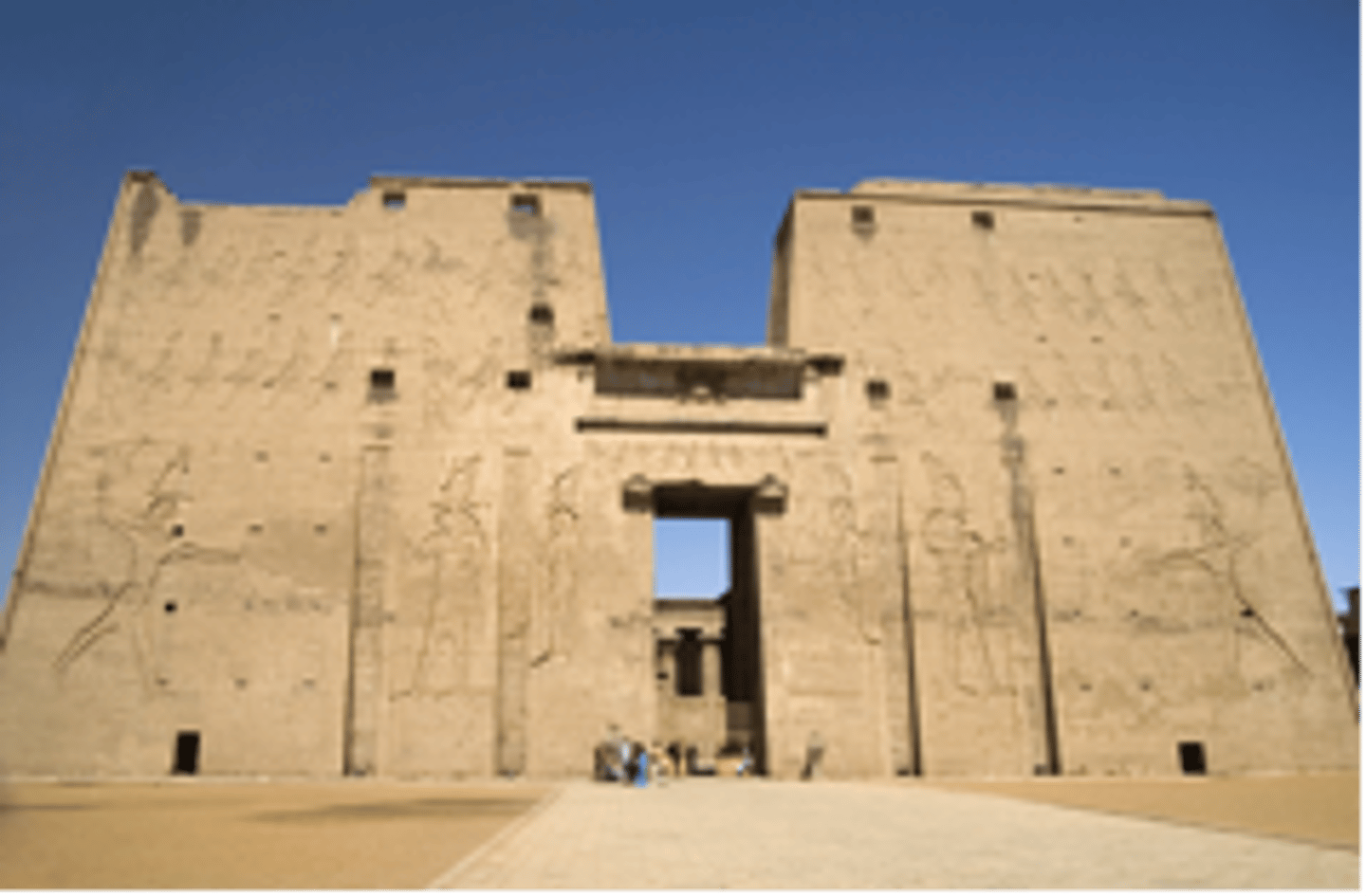
terra cotta
baked earth; hard, brownish-red pottery
